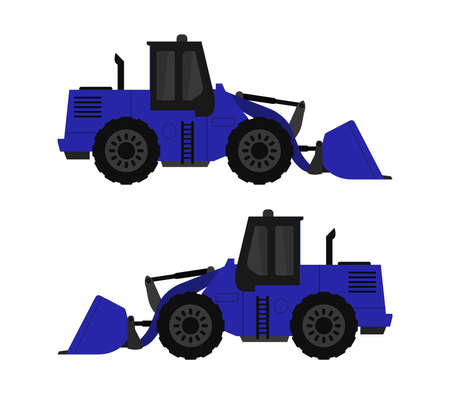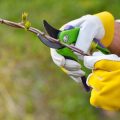Introduction to Garden Machinery Safety in the UK
Operating garden machinery is an essential part of maintaining outdoor spaces across the United Kingdom, from private home gardens to public green areas. However, the use of such equipment presents significant safety risks if not handled properly. In the UK, there is a strong cultural emphasis on safety and personal responsibility, reinforced by comprehensive legislation such as the Health and Safety at Work Act 1974 and the Provision and Use of Work Equipment Regulations 1998 (PUWER). These laws require individuals and employers to ensure that all machinery is used safely and maintained in good condition. Beyond legal compliance, British culture values consideration for neighbours, noise control, and environmental protection when using equipment like lawn mowers, hedge trimmers, and chainsaws. Therefore, understanding and adhering to established safety guidelines is crucial not only to prevent accidents and injuries but also to maintain harmonious community relations and uphold national standards of care.
2. Preparation Before Operating Machinery
Proper preparation is essential to ensure safe and efficient operation of garden machinery within the UK. By following a structured approach prior to use, operators can significantly reduce the risk of accidents and equipment damage. This section outlines key preparatory steps, including pre-operation checks, reviewing manufacturer’s guidelines, and selecting appropriate personal protective equipment (PPE) as per UK health and safety standards.
Pre-Operation Checks
Conducting thorough checks before starting any garden machinery is crucial for early identification of faults or hazards. The following table summarises key components to inspect:
| Component | Check |
|---|---|
| Power Source | Ensure battery is charged or fuel is sufficient; inspect for leaks or corrosion |
| Blades/Moving Parts | Confirm sharpness, secure fitting, and absence of debris |
| Safety Guards | Verify presence and condition; never operate if missing or damaged |
| Cables & Plugs (for electric tools) | Inspect for fraying, cracks, or exposed wires |
| Tyres/Wheels | Check for wear and proper inflation (if applicable) |
Reading Manufacturer’s Guidelines
It is vital to read and understand the manufacturer’s instructions provided with each piece of equipment. These guidelines offer specific advice on operation, routine maintenance, troubleshooting, and safe handling. Adhering to these instructions ensures compliance with both warranty conditions and UK legal requirements regarding machinery use.
Selecting Appropriate PPE in Line with UK Standards
The Health and Safety Executive (HSE) mandates suitable PPE for operating garden machinery. The table below highlights typical PPE requirements:
| PPE Item | Description/UK Standard Reference |
|---|---|
| Protective Gloves | Reduces risk of cuts and abrasions; conforms to EN 388:2016 |
| Safety Goggles/Visors | Shields eyes from flying debris; meets BS EN 166 standard |
| Hearing Protection | Mufflers or earplugs where noise exceeds 85dB(A); adheres to Control of Noise at Work Regulations 2005 |
| Steel-Toe Boots | Protects feet from heavy objects; complies with BS EN ISO 20345:2011 |
| Long Trousers & Sleeves | Prevents skin contact with sharp materials and irritants; general best practice in the UK climate |
Summary of Best Practice
A systematic approach to preparation – through diligent inspection, adherence to manufacturers’ guidance, and correct PPE usage – forms the foundation of safe garden machinery operation across the UK. Operators should always take these preparatory measures seriously to uphold personal safety and legal compliance.

3. Safe Operation Practices
Essential Operating Techniques for UK Garden Machinery
When operating garden machinery in the UK, it is crucial to follow best practices tailored to both the equipment and local conditions. Always read the manufacturer’s manual before use, ensuring you understand specific instructions for lawnmowers, strimmers, and hedge trimmers. Wear appropriate personal protective equipment (PPE), such as sturdy footwear, eye protection, and gloves, to mitigate risks from flying debris and accidental contact with moving parts.
Advice for Safe Handling
Safe handling begins with a thorough inspection of your machinery before each use. Check for damaged cables, loose blades, or fuel leaks, and never operate faulty equipment. Only use garden machinery in daylight or good artificial light to maintain visibility. When working on sloped lawns or uneven ground, always mow across the slope rather than up and down to reduce the risk of slips and loss of control. For strimmers and hedge trimmers, maintain a firm grip on both handles and keep bystanders, especially children and pets, at a safe distance.
Recommendations for Common UK Garden Machinery Types
Lawnmowers
Keep hands and feet away from all moving parts and never attempt to clear blockages while the mower is running. Electric models should be used with an RCD (residual current device) to prevent electric shock. Petrol mowers must be refuelled outdoors with the engine off and cool.
Strimmers
Check that guard attachments are secure before starting. Hold the tool at hip height and move it in a sweeping motion away from your body. Avoid using strimmers near gravel or hard surfaces where debris can become projectiles.
Hedge Trimmers
Inspect blades for sharpness and secure fittings. Cut at waist height when possible, using stable ladders or platforms for higher hedges instead of overreaching. Always disconnect power before maintenance or blade cleaning.
General Safety Considerations
No matter the type of machinery, always store equipment safely after use, out of reach of children and protected from weather exposure. Regular servicing according to manufacturer guidelines will ensure ongoing safety and reliability in every gardening season across the UK.
4. Managing Risks in Different Weather Conditions
The British weather is renowned for its unpredictability, and this poses specific challenges when operating garden machinery. Whether you are dealing with sudden showers, icy mornings, or gusty winds, adapting your approach is essential to ensure both safety and efficiency. Below are comprehensive guidelines to help you manage risks associated with various weather conditions across the UK.
Adapting to Wet Conditions
Rain and dampness can create slippery surfaces, affect machinery performance, and increase the likelihood of electrical hazards. Operators should always:
- Inspect the working area for waterlogged patches or muddy slopes before starting.
- Wear non-slip, waterproof footwear and gloves for better grip and protection.
- Ensure all electrical tools and extension leads are rated for outdoor use and avoid using them in heavy rain.
- Clean any mud or debris from machinery after use to prevent corrosion and maintain optimal performance.
Navigating Icy or Frosty Conditions
Icy surfaces significantly raise the risk of slips and falls. Cold temperatures may also affect equipment functionality. Key precautions include:
- Delay work if pathways or lawns are visibly icy; allow time for thawing where possible.
- De-ice paths using grit or salt before moving machinery over them.
- Check that moving parts on equipment have not seized up due to frost—lubricate as needed.
- Dress in layers to maintain warmth without sacrificing mobility or visibility.
Working Safely in Windy Conditions
High winds can make handling garden machinery hazardous, especially when operating at heights or around trees. To mitigate these risks:
- Avoid using ladders, hedge trimmers, or chainsaws during gusty periods—postpone work if wind speed exceeds safe limits recommended by manufacturers.
- Be vigilant about flying debris and secure loose items in the work area.
- If using petrol-driven equipment, check fuel caps are tightly sealed to prevent spillage caused by wind movement.
Weather Condition Risk Matrix
| Weather Condition | Main Hazards | Recommended Actions |
|---|---|---|
| Wet/Rainy | Slippery surfaces, electrical hazards | Use waterproof PPE, check electrics, clean equipment post-use |
| Icy/Frosty | Slips/falls, frozen equipment parts | Delay work, de-ice paths, lubricate moving parts |
| Windy | Losing balance, flying debris | Avoid height work, secure area, check fuel caps |
Summary Best Practices
- Always review local weather forecasts prior to commencing any gardening tasks.
- If conditions become unsafe during operation, cease activity immediately and reassess later.
By proactively managing these weather-related risks, operators can uphold high standards of safety while adapting to the unique challenges presented by the UK climate.
5. Safe Storage and Maintenance
Best Practices for Storage
Proper storage of garden machinery is essential not only for safety but also for maintaining the integrity and longevity of your equipment. Always store machinery in a secure, dry location such as a locked shed or garage to prevent unauthorised access, particularly by children. Ensure all machines are switched off, cooled down, and have safety locks engaged before storing. Position fuel-powered tools upright and away from sources of heat or open flames to minimise fire risk. For electrical tools, unplug them and coil cords neatly to avoid trip hazards.
Cleaning Procedures
Regular cleaning is vital for optimal performance and hazard prevention. After each use, remove grass clippings, mud, and debris from blades, vents, and other working parts using a brush or compressed air—never use hands directly on sharp edges. For petrol-driven machines, wipe surfaces with a damp cloth and check for any fluid leaks. Ensure that all cleaning products used are suitable for the specific material of your equipment to avoid corrosion or damage.
Routine Maintenance Schedule
Adopting a scheduled maintenance routine significantly reduces the risk of malfunction and extends machinery lifespan. Follow the manufacturer’s guidelines for servicing intervals. Key tasks include checking oil levels, tightening bolts, sharpening blades, and inspecting cables for wear or fraying. Replace worn or damaged parts promptly using approved components. Keep a maintenance logbook to track repairs and services; this is especially useful for compliance if your equipment is used in a commercial setting.
Safety Inspections
Before each use, conduct a thorough visual inspection of your machinery. Look out for cracks, missing guards, loose fastenings, or signs of excessive wear. If defects are found, do not operate the machine until repairs are completed. Regular inspections help identify issues early, preventing potential accidents.
Disposal of Hazardous Materials
Dispose of old oil, lubricants, batteries, and fuel according to local UK environmental regulations at designated recycling centres. Never pour chemicals down drains or onto soil as this can cause environmental harm and legal repercussions.
Summary
By adhering to these best practices for storage, cleaning, and maintenance, you not only safeguard users but also ensure that your garden machinery remains reliable and efficient throughout its service life.
6. Emergency Procedures and First Aid
Steps to Take in Case of Accidents or Injuries
Even with rigorous safety precautions, accidents can still occur when operating garden machinery. It is vital to respond swiftly and effectively in order to minimise harm and prevent further complications. The first step is to immediately stop the machinery and ensure it is switched off safely before attending to any injuries. Assess the situation calmly, checking for hazards such as spilled fuel, electrical risks, or moving parts, and move yourself and the injured person to a safe location if possible.
First Aid Resources Commonly Available in the UK
Every garden shed or work area should be equipped with a well-stocked first aid kit that complies with British Standards (BS 8599-1). Essential items include sterile dressings, plasters, antiseptic wipes, bandages, eye wash pods, burn dressings, and disposable gloves. It is advisable for anyone regularly operating garden machinery to undertake a basic first aid course accredited by organisations such as St John Ambulance or the British Red Cross. Many community centres and local councils offer these courses throughout the UK.
Dealing with Common Garden Machinery Injuries
- Cuts and Lacerations: Apply pressure with a sterile dressing to stop bleeding. If the wound is severe or does not stop bleeding after ten minutes, seek professional medical attention.
- Burns: Cool the affected area under running water for at least ten minutes. Cover loosely with a non-stick dressing and avoid applying creams or oils.
- Eye Injuries: Rinse the eye gently with clean water or an eye wash solution. Do not rub the eye or attempt to remove embedded objects; seek immediate medical help.
How to Contact Local Emergency Services
If an injury is serious or life-threatening, dial 999 from any phone in the UK to reach emergency services (ambulance, fire brigade, police). Clearly state your location and describe the nature of the injury. For less urgent advice regarding minor injuries, you can contact NHS 111 for guidance on appropriate care or visit your nearest Accident & Emergency (A&E) department. Always ensure that you know your precise address or postcode before starting work outdoors so you can provide accurate information in an emergency.
Key Takeaway
A proactive approach to emergency procedures—supported by accessible first aid resources and knowledge of how to contact local services—significantly enhances safety standards when operating garden machinery across the UK.


